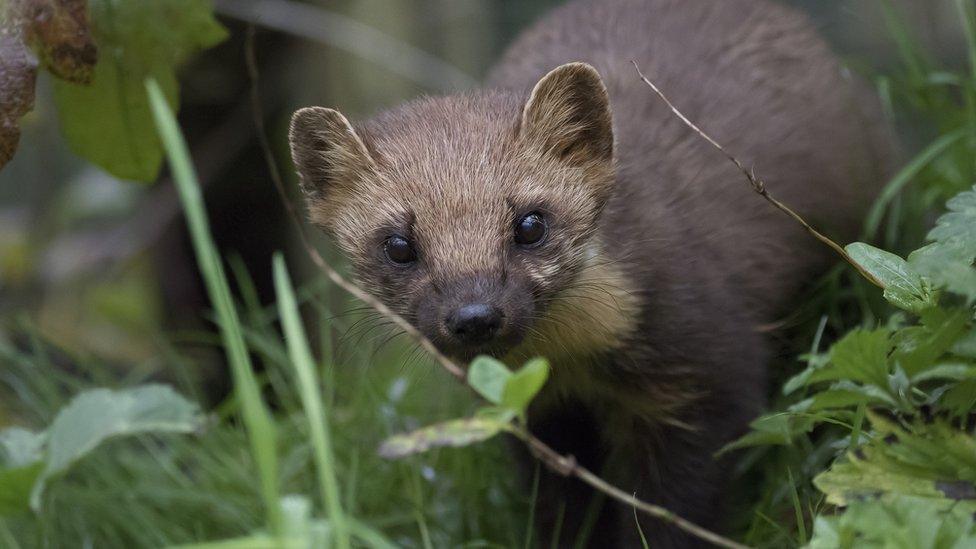First Grizedale Forest pine marten in 10 years caught on camera
- Published
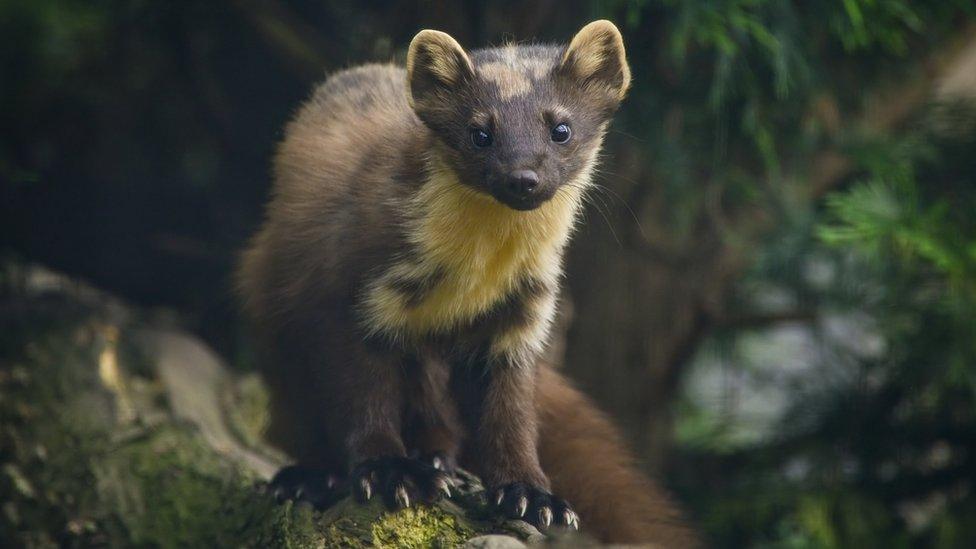
Pine martens can be found in Scotland but are rarely seen in Cumbria
The first confirmed sighting of a pine marten in south Cumbria in more than 10 years has been caught on camera.
The elusive member of the weasel family was recorded in Grizedale Forest, Forestry England said.
The animals were common in Cumbria until the late 19th Century but were hunted as vermin and lost habitats, a spokesman said.
Forestry England ecologist Tom Dearnley said the mammal's return to the area was a "landmark event".
The Grizedale pine marten was caught on a remote camera at about 03:00 BST on Tuesday.
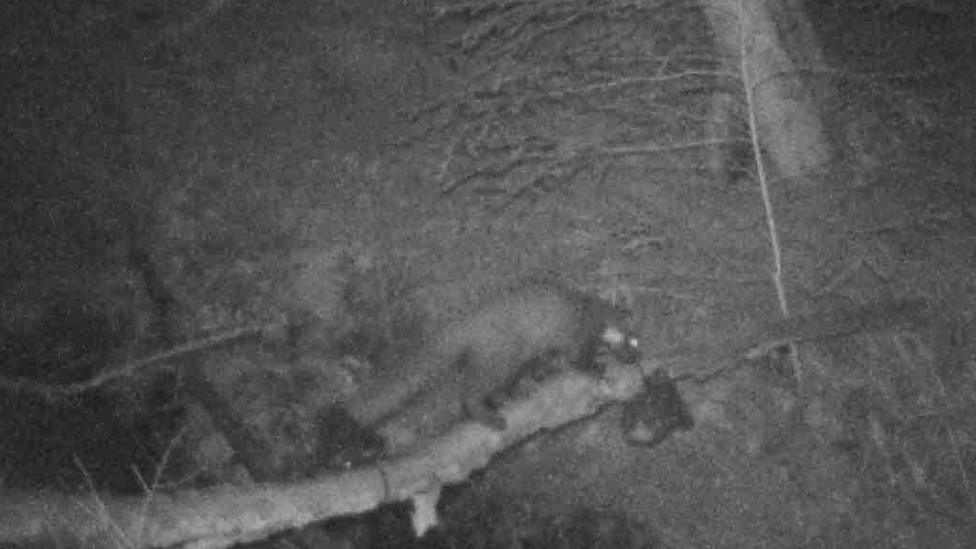
The pine marten was filmed by a remote camera in Grizedale Forest on Tuesday morning
Forestry England has been carrying out a three year feasibility study along with the Graythwaite Estate and Cumbria Wildlife Trust to look at the best way of reintroducing pine martens.
Mr Dearnley said it was predicted a "small number" of pine martens may move into the area from Scotland independently and the video was confirmation providing "solid foundations to build on".
Ed Sandys, manager of Graythwaite Estate, said: "We are extremely excited that a pine marten has been seen in our area and must maintain momentum to assist in the recovery of our endangered wildlife."
The University of Cumbria has been leading a survey for pine martens.
Project officer Mic Mayhew said: "Our research shows that pine martens moving south face serious obstacles, including the M6 motorway, and it is likely to be decades before we have a viable breeding population in south Cumbria.
"The best way to recover populations will involve the release of additional animals trapped under licence in Scotland - known as a translocation."
A working group has been established to develop the next stage of pine marten recovery, a Forestry England spokesman said.

Pine Martens

Pine martens are part of the mustelid family of carnivorous mammals, which includes weasels, badgers, otters, ferrets and minks.
They grow to approximately 60cm long and prefer well-wooded areas with plenty of cover and largely feed on small rodents, birds, insects and fruit.
They were all but extinct in England by 1900 due to habitat loss and being hunted for their fur.
Only small and fragmented populations remain in the UK, mostly in Scotland although they have been spotted recently as far south as London and the New Forest.
Every pine marten is chestnut brown in colour but each has a uniquely shaped bib - a pale yellow section of fur on its chin and throat - which makes it possible to identify and record each individual.

Follow BBC North East & Cumbria on Twitter, external, Facebook, external and Instagram, external. Send your story ideas to northeastandcumbria@bbc.co.uk, external.
Related topics
- Published22 July 2022
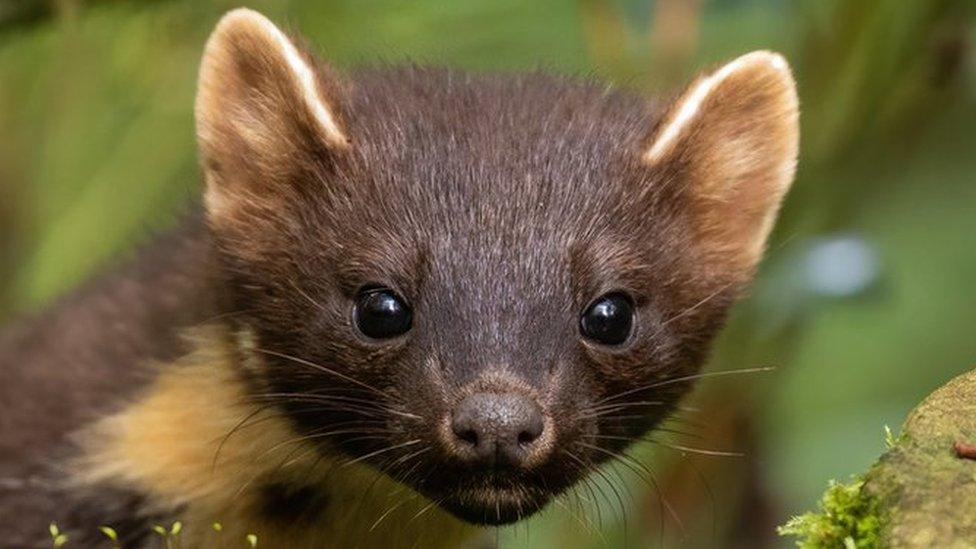
- Published12 July 2022
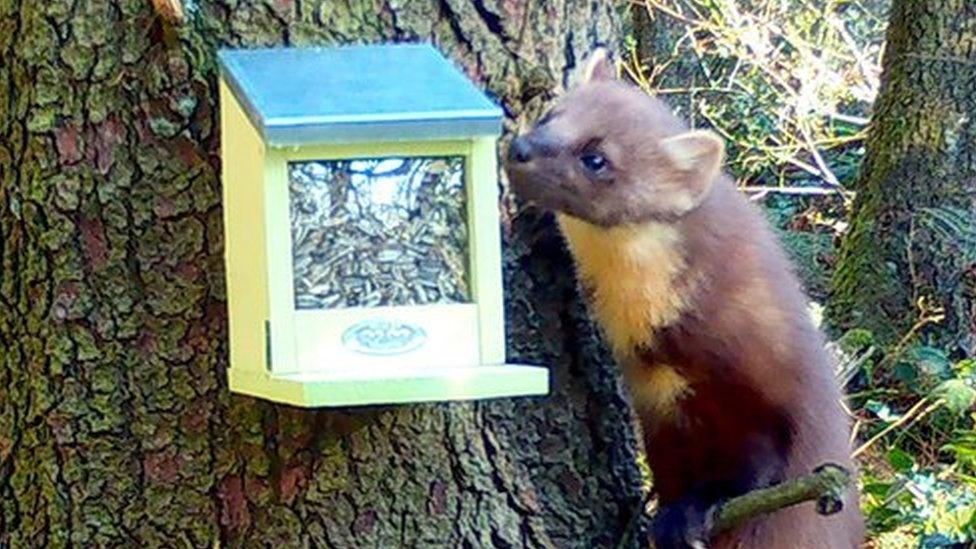
- Published12 October 2021
